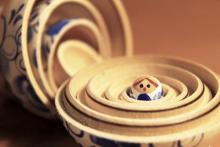Introduction To The Koshas: The Many Layers Of Us
The body is layered, stacked like a Russian doll. In yogic philosophy, it is explained how the body is actually made up of various sheaths and what each sheath of the body is responsible for. By coming to know the five main koshas, or body fields or sheaths, it is easier to understand what part of us responds to, holds or processes each of our experiences.






